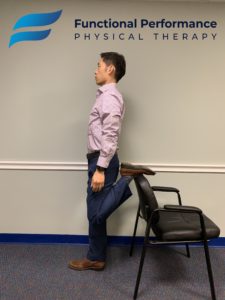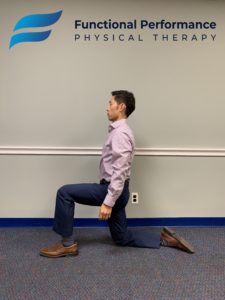
The Forgotten Core Among Triathletes
Triathletes train hard and want the latest and lightest equipment to get an edge. But it’s not all about just having the fanciest equipment, but rather configuring and adjusting the correct equipment to a healthy body position which will result in the most bang for the buck. We read numerous articles on the web about the importance of strengthening the core muscles. However, the subject of core mobility is few and far between.
There are many factors that influence our performance on race day – mechanical design/components of the bike, physiological factors of the athlete, and the environment. This article focuses on the importance of maintaining ideal mobility of the main core muscle and how it influences the human ergonomics of cycling and running so that you can be more efficient and faster.
Optimizing Muscle Position
When we are riding on the bike, it is useful to think of the human body and bike as a coupled unit. The human body functions as the engine of this machine, generating power. In order to produce more power, we need to optimize muscle recruitment. Maximal muscle recruitment is produced in the middle range of the muscle length, which is just the right amount of overlap between the two types of myofibrils (myofibrils make up striated muscle cells). If there’s either too much or not enough overlap between these myofibrils, force production is significantly reduced. Think of doing a biceps curl with a 25 pound dumbbell. You’ll notice that the weight of the dumbbell feels different at different phases of a bicep curl. It’s a lot easier to bend your elbow when it’s at 90 degrees compared to when it’s straight or completely bent. This same principle applies to all muscles when we are riding on the bike or running for hours. Therefore, it is important to make sure we have the proper mobility in our joints and muscle/tendon complex so we can be efficient in generating power and avoid wasting energy.
The Hidden Core

The iliopsoas is one of the most important muscles in your body because it is a large muscle that connects your lower back to the pelvis to your femur (thigh bone). By now, you’ve heard how important it is to work on your core. Unfortunately, most people are unaware of this significant core muscle and continue to strengthen the superficial abdominal muscles. The iliopsoas consists of 2 muscles, iliacus and psoas muscles. It’s designed to be very strong, as it needs to handle a lot of repetitive force. These muscles are responsible for swinging your leg forward when you run. Every time you lift your knee, it contracts and every time the leg swings back, the muscle lengthens. When you run faster, the iliopsoas activates more since it drives the leg through the air as the stride length increases. In addition, a healthy iliopsoas allows us to maintain good upright posture and stabilizes the pelvis and spine. On the bike, the psoas muscles is active during the 12 o’clock position in the pedal cycle. In an ideal pedal stroke, we do not want the iliacus to be activating as it does not really contribute to power output.
Reaction of Inefficient Iliopsoas
When we sit, the iliopsoas muscle, along with hamstrings are in a shortened state. This inefficient position of the muscle fibers hinders maximal muscle contraction. Over a period of time, these shortened muscles become stressed and send signals to shut off the gluteal muscles. In addition, studies have shown a correlation between limited hamstring flexibility and decreased strength in the gluteus maximus. This cycle continues and ultimately leads to weak muscles and compensatory muscle recruitments which result in poor performance and injuries.
To understand this better, stand up and try to run while leaning forward from your waist. Now try running while you are upright. You can immediately notice the difference when you are upright because your iliopsoas and gluts are in a better position to fire. When you are bent over, the iliopsoas is in a shortened state and gluts are in a lengthened state, causing inefficient muscle recruitment.
Being in a triathlon bike position requires different muscle activation compared to a regular cycling bike. Studies have shown that the gluteus maximus (buttock muscles) and vastus lateralis muscles (outer thigh muscle) fire significantly more in an aerodynamic position. These two large powerful muscles produce the greatest amount of torque in cycling – from 12 o’clock to 5 o’clock in the pedal cycle. In addition, the gluteus maximus is the major muscle that propels your body forward in running. If the gluteus maximus cannot fire effectively due to poor bike position or due to lack of flexibility, smaller muscles such as the gluteus medius and the tensor fasciae latae take up the slack which then leads to injuries such as greater trochanteric bursitis, IT band syndrome, and patellofemoral pain syndrome. Now you understand why using a foam roller over the IT band will not solve your IT band pain. Other muscles that tend to compensate for the gluteus maximus are the hamstrings. That’s the reason why hamstring injuries are the most frequent leg muscle injury during sprinting.
Take Action
The reoccurring theme in this article is that an impairment in one variable, whether be it a part of your body or bike will lead to compensation. And these compensatory movements will ultimately end up in decreased muscle force production and pain/injury, leaving you on the sideline. Below are some exercises you can do to improve mobility so you can better recruit your core muscles.
Iliopsoas Release
Lie on your back and place a lacrosse ball between your belly button and the hip bone. Place a kettle bell on top of the lacrosse ball to apply pressure. Straighten your leg very slowly – should take about 6 seconds. Relax the leg once it is straight and stay in that position for 6 seconds. Repeat this 6 times on both sides. You can progress this lifting your arm overhead.

Foam Rolling Tensor Fasciae Lata (TFL) & Gluteus Medius
To roll the TFL, place the foam roller under the TFL, which is just below the pelvis bone (refer to the anatomy picture above for reference). For the Gluteus Medius, cross your leg as the muscles is behind the TFL.
Foam Rolling Vastus Lateralis (Outer Thigh Muscle)
This is the most outer thigh muscle. Target the bottom portion of this muscle, by placing the foam roller just above the knee cap and turning your foot inward.
Foam Rolling Biceps Femoris (Outer Hamstirngs)
Target this muscle by placing the foam roller behind the leg and turning your foot out. Target the bottom portion of this muscle.
Easy Stretches at the Office
Hamstrings Stretch
This is one of my favorite ways to stretch the hamstring muscles because I can sit on my chair, work and stretch at the same time. Sit on the edge of the chair. Keep one knee straight so the heel is on the floor. Make sure your knee is straight. Bending at your hips, like a hinge, and gently lean forward slowly. Make sure you keep your chest up. You should feel a pull behind your leg. Hold for 30 seconds. Repeat 3 times a day.

Quad Stretch
Stand with one foot behind back of a chair or arm rest. Make sure you are standing up tall and that your knees are next to each other. You should feel a stretch on your quad muscle. Hold for 30 seconds. Repeat 3 times a day.

Half Kneeling
To perform, get into a half kneeling position, as shown in the picture. On the kneeling leg, you should not be putting any weight on the knee cap, instead you should be feeling slight pressure on the bone under the knee cap. Make sure your knees are bent at 90 degrees. Rotate your pelvis back (posterior rotation). You may hold onto a stable surface to maintain good balance in the beginning. Hold this position for 30 seconds and repeat 3 times on both legs. This stretch can be progressed by raising your arm up on the side where the knee is on the ground.

Single Leg Deadlift
- Stand and balance on one leg.
- Next, lean forward towards the floor as you extend and lift your leg behind your body.
- Keep your spine and leg straight and hinge at the hip.
- Return to starting original position and repeat.
- Perform this exercise without shoes to engage the intrinsic muscles of your foot.
Single Leg Bridge
- While lying on your back with your knees bent, extend one knee as shown.
- Next, raise your buttocks off the floor/bed.
- Try and maintain your pelvis level the entire time.
- Repeat 3 sets of 10 reps on each side.
Side Steps with Resistance Band
- With an elastic band around both ankles, step to the side while keeping your feet spread apart and maintaining resistance.
- Make sure your knee is directly over your feet and avoid turning your knees in.
- Keep your knees slightly bent the entire time.
- Perform 3 sets of 10 steps to each side.
These exercises should not be performed if you are in pain. If you are suffering from pain and want immediate relief or want to run and bike faster, efficient, and injury free, visit us at www.fpphysicaltherapy.com.


 Bryn Maw, PA
Bryn Maw, PA 610-822-1072
610-822-1072